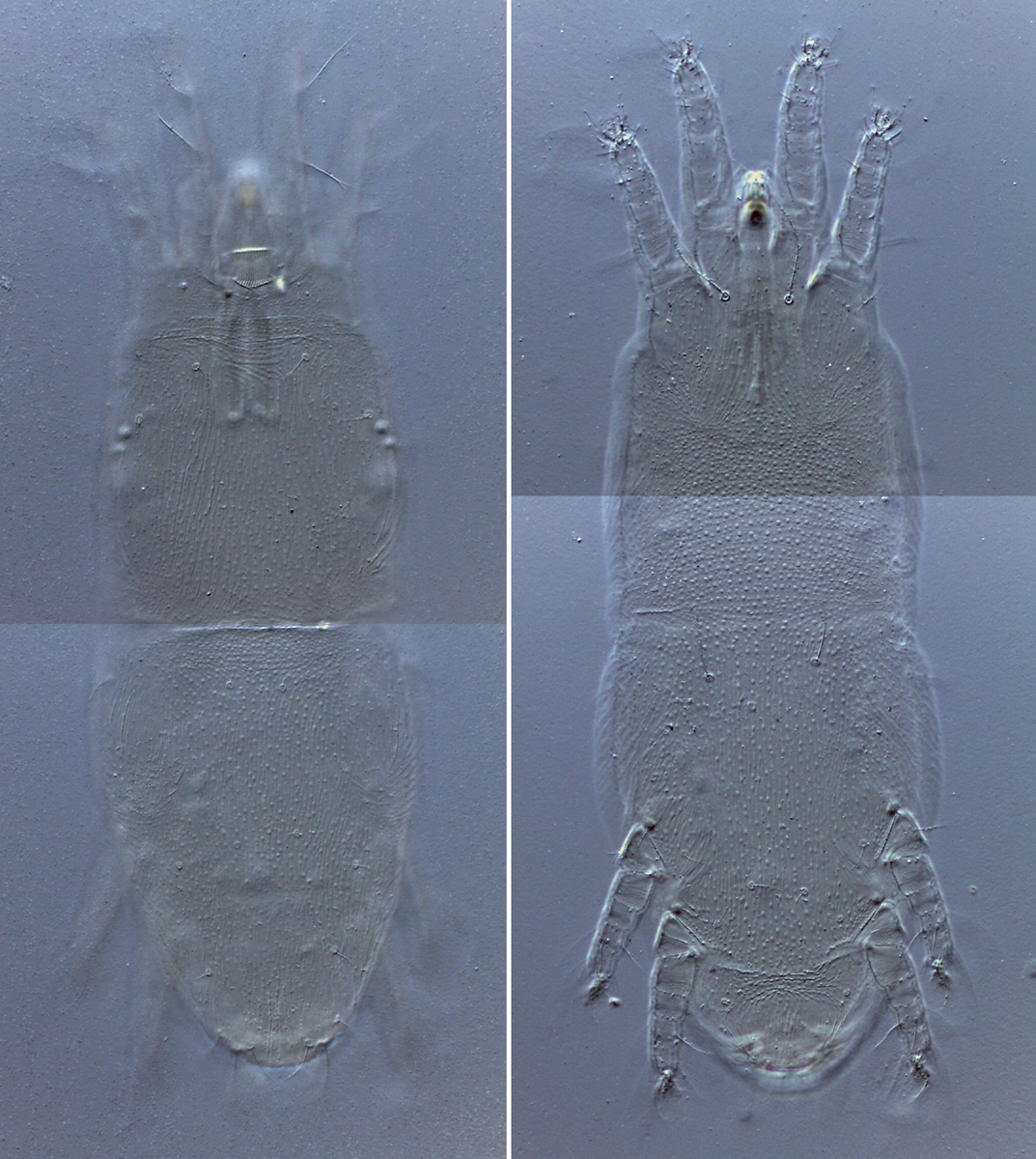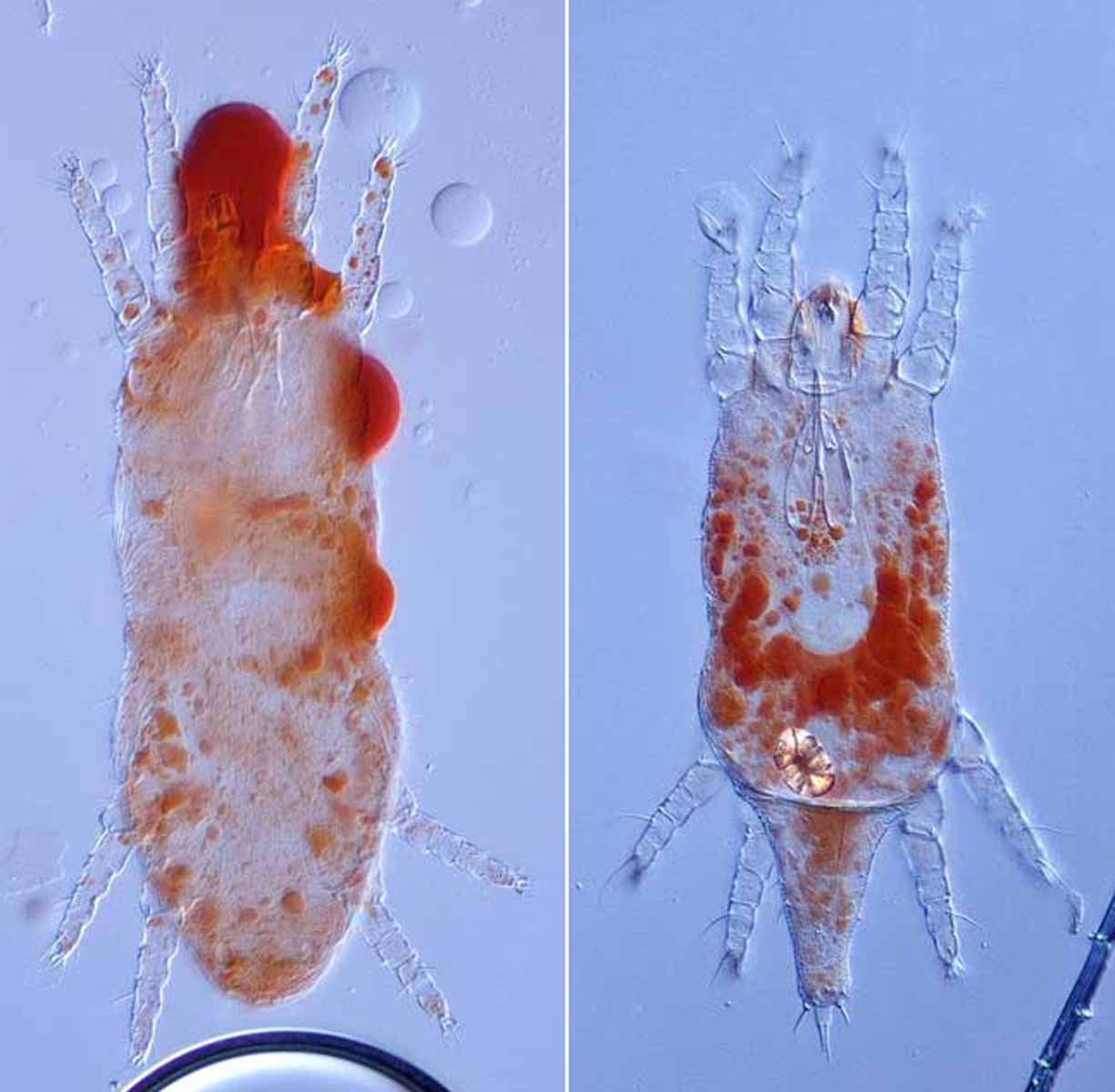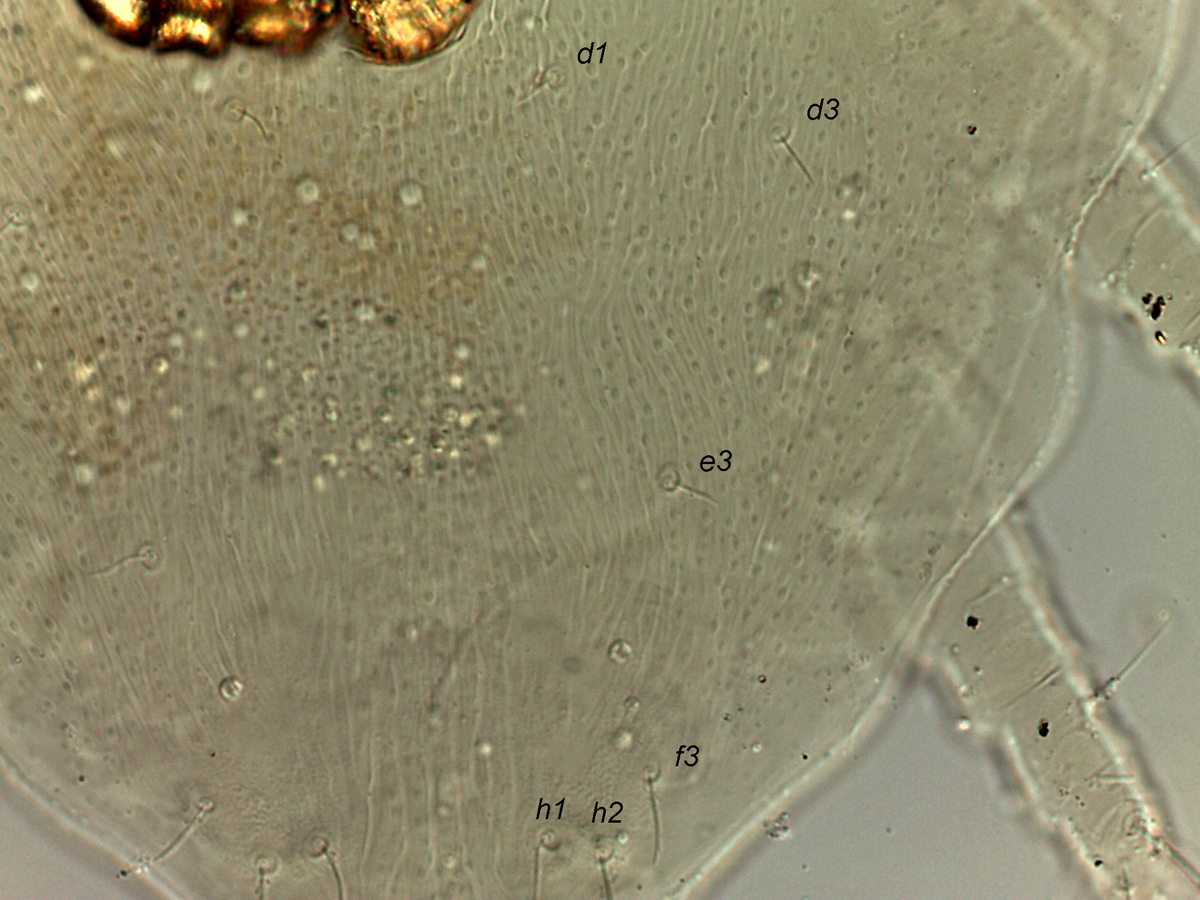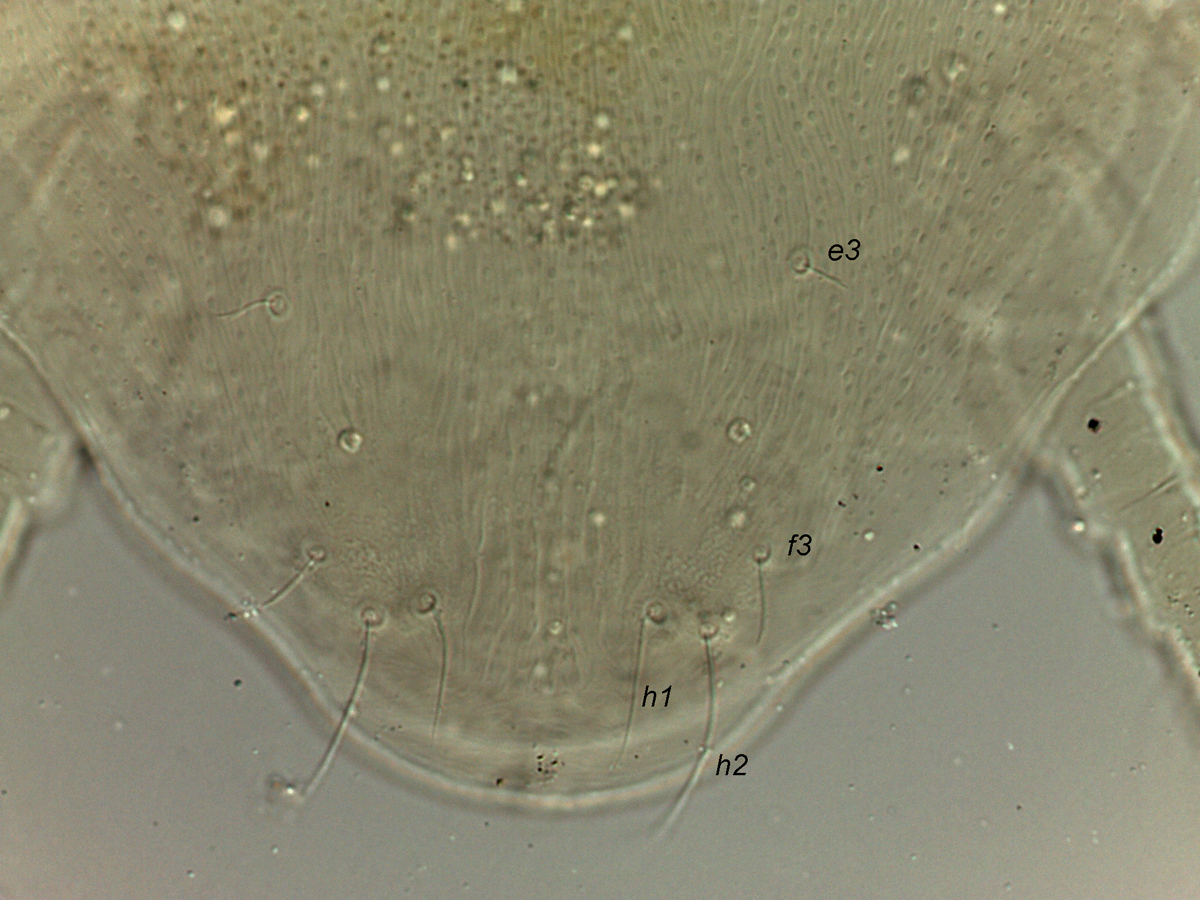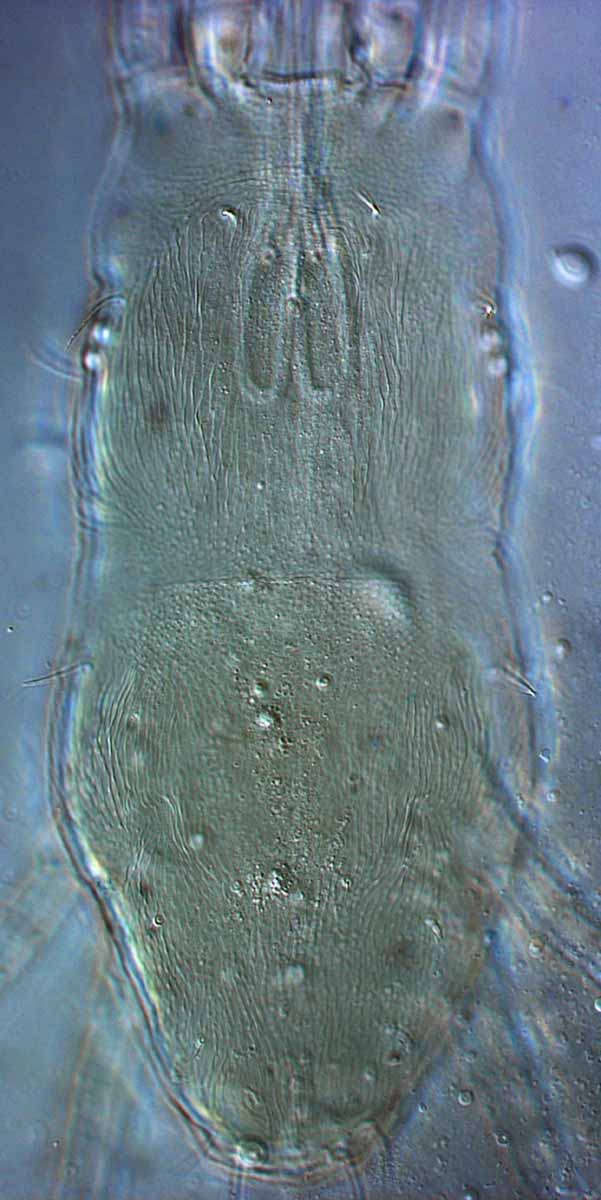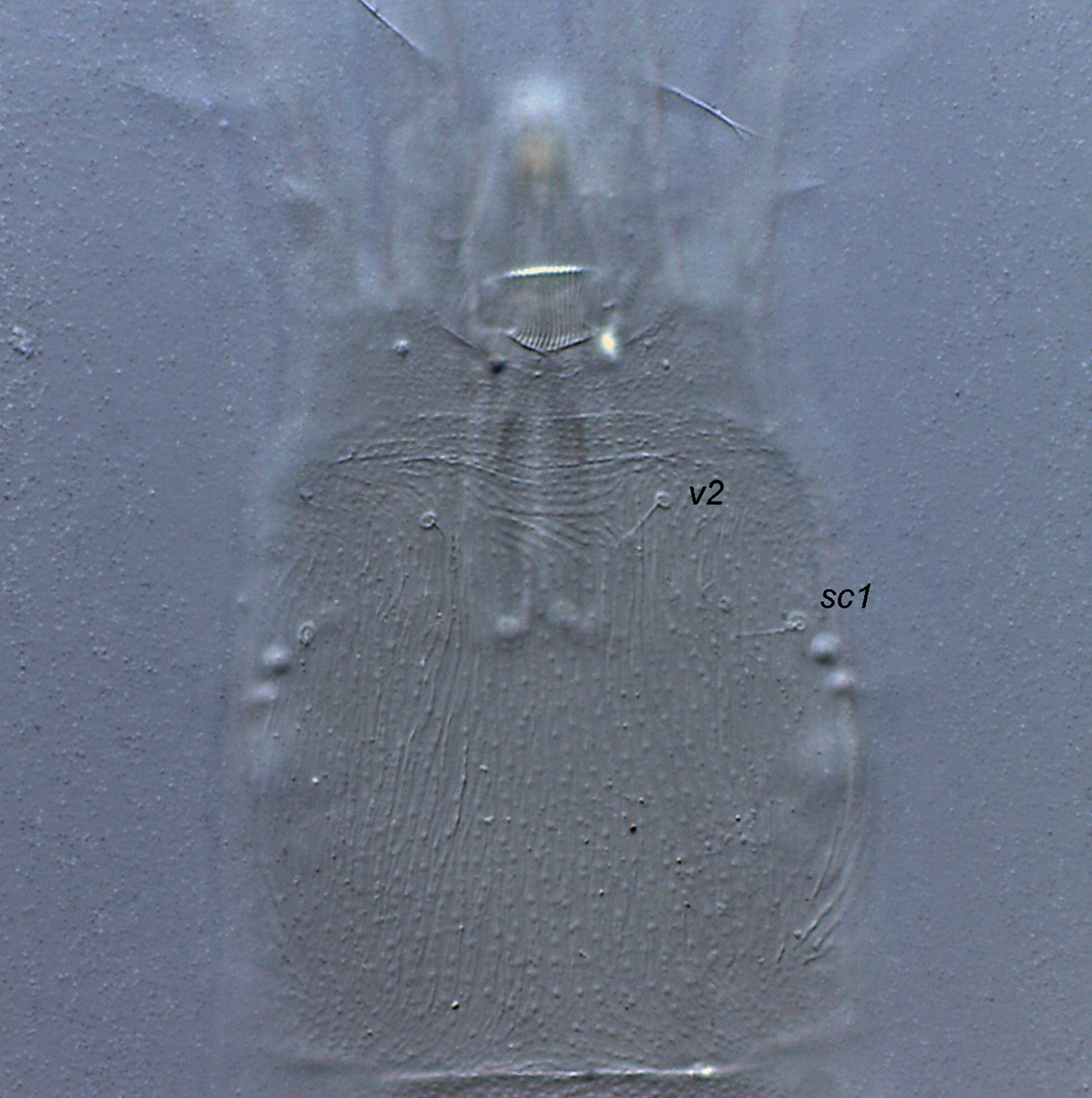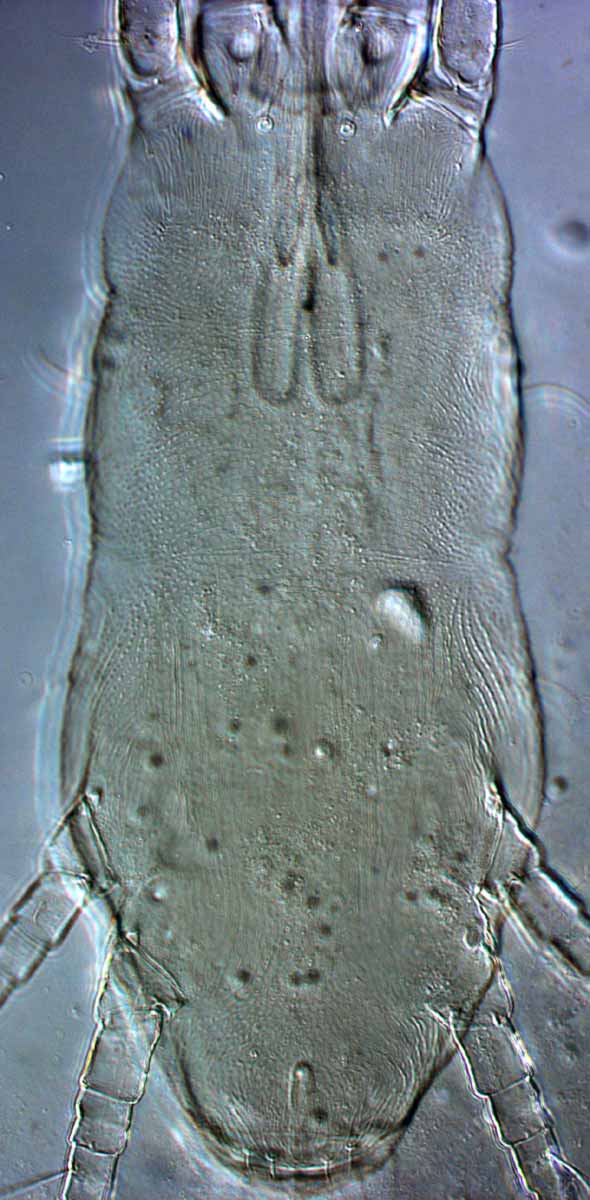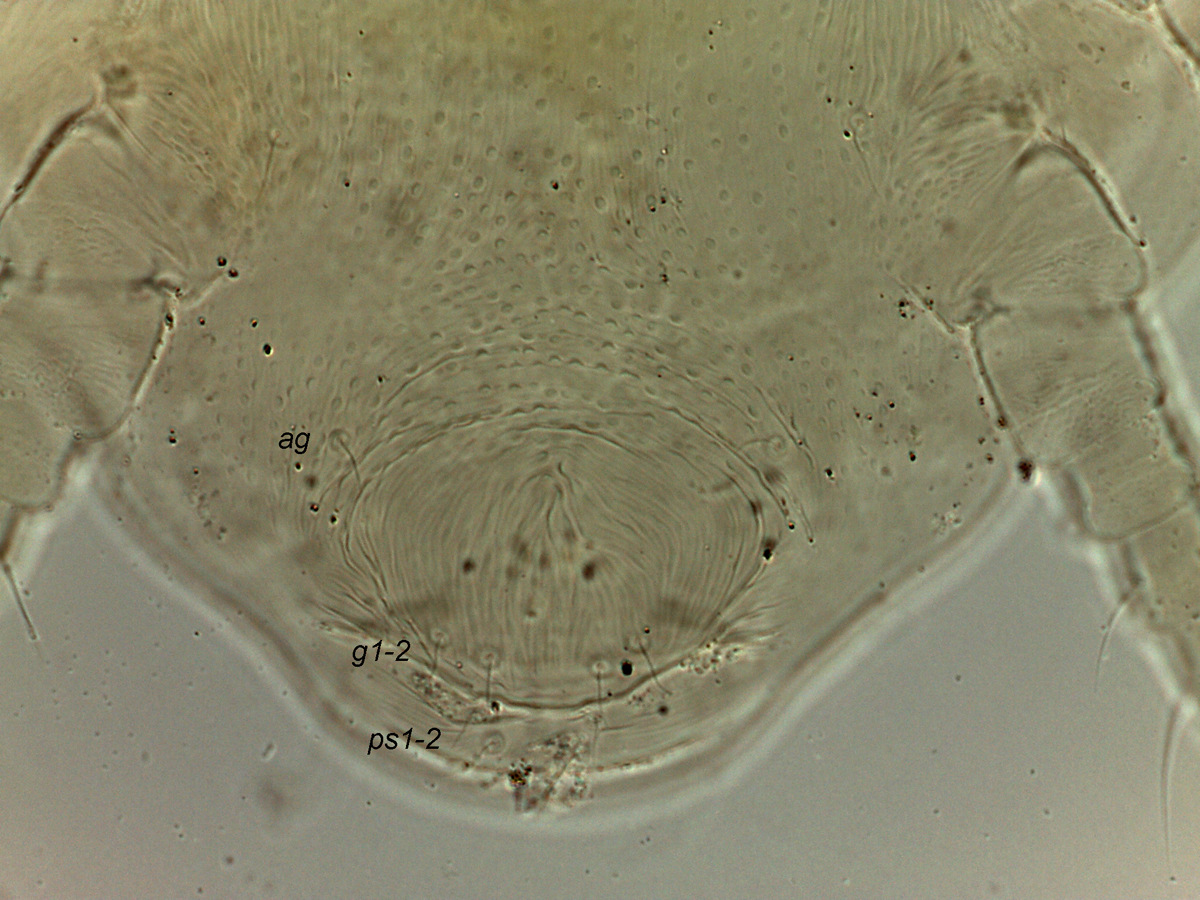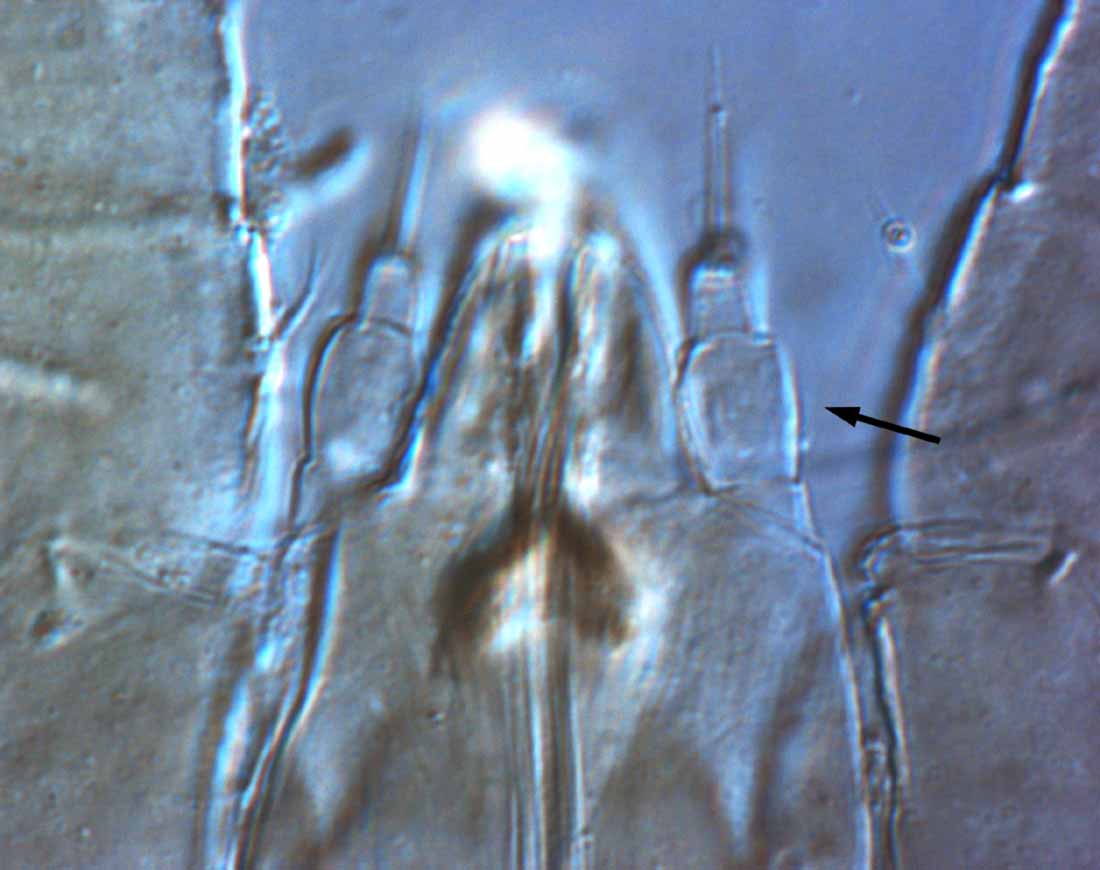Dolichotetranychus
|
Fig. 1. Dolichotetranychus sp. female dorsum and venter. |
|
Fig. 2. Dolichotetranychus adult female (left) and male (right) dorsum (images: Philip Johnson, USDA-APHIS-PPQ). |
|
Fig. 3. Dolichotetranychus floridanus female dorsum (after Baker 1956). |
|
Fig. 4. Dolichotetranychus sp. female dorsum, posterior opisthosoma. |
|
Fig. 5. Dolichotetranychus sp. female dorsum, posterior opisthosoma. |
|
Fig. 6. Dolichotetranychus floridanus female dorsum. |
|
Fig. 7. Dolichotetranychus sp. female prodorsum, without projections or notches. |
|
Fig. 8. Dolichotetranychus floridanus female venter. |
|
Fig. 9. Dolichotetranychus female posterior venter, indicating genital region. |
|
Fig. 10. Dolichotetranychus floridanus female, 3 segmented palps (indicated by arrow). |
Key characters
- d2, e1, e2, f2 absent (Figs. 3, 4, 5)
- h2 not extremely elongate
- body distinctly longer than wide (Figs. 1, 2, 3)
- anterior margin of prodorsum without notch or projection (Figs. 6, 7)
- ventral, genital and anal plates not developed, membranous (Figs. 8, 9)
- 1-2 pairs ps setae (Fig. 9)
- 3 segmented palp (Fig. 10)
- nude genua III-IV
- true claws uncinate or pad-like
- males with distinctly shaped posterior opisthosoma (Fig. 2)
- usually with distinct "granular" cuticle (Fig. 1)
Similar taxa
Afronychus - c2 absent (present in A. mulibrinus); e1 present (absent in A. cliffortiae); e2, f2 present
Number of species
approx. 23
Authority
Sayed
Distribution
World wide, with most species recorded from Nearctic region (8 spp.) and Oriental (5 spp.).
Countries include: Australia, Egypt, India, Indonesia, Iraq, New Zealand, South Africa, Sri Lanka, USA.
Hosts
Relatively few families, mostly monocots. By far the most common host family is Poaceae, followed by Bromeliaceae and Asteraceae.
Colour
- red to orange when alive
- eggs lemon to orange

